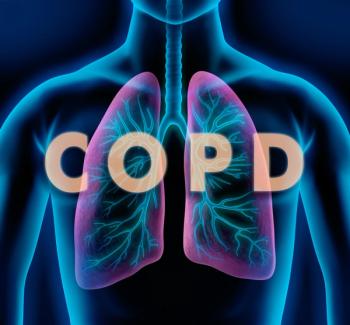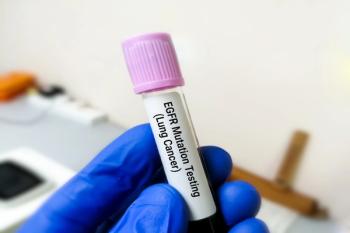
Clinical
Latest News

Latest Videos

CME Content
More News

Many US dairy farms have not yet increased bird flu protections for employees despite the outbreak in cows; the human papillomavirus (HPV) vaccine is linked to a drastic reduction in head and neck cancers in adolescent boys and men; the World Health Organization recently accused tobacco companies of actively trying to hook a new generation on nicotine.

Patients who took the weekly glucagon-like peptide 1 (GLP-1) receptor agonist were 21% less likely to experience major kidney disease events and 29% less likely to die due to cardiovascular causes.

Prophylactic intravenous immunoglobulin reduces COVID-19 infection rates in older patients with DLBCL with hypogammaglobulinemia undergoing reduced-intensity R-CHOP therapy.

Newly published findings from the pivotal phase 3 BE HEARD I and BE HEARD II trials demonstrated that bimekizumab was well tolerated and produced clinically meaningful responses in patients with moderate to severe hidradenitis suppurativa.

A retrospective analysis found glucocorticoid treatment to reduce comorbidities in adults with Duchenne muscular dystrophy (DMD) and assessed the relationship between anthropometric measures and respiratory function and functional abilities.

An aflibercept dose of 4 mg for macular degeneration was found to reduce both central macular thickness and pigmental epithelium detachment for a longer duration compared with the 2 mg dose.

HHS officials are moving forward with a plan to produce 4.8 million doses of H5N1 avian flu vaccine; Novo Nordisk’s long-acting insulin had a greater risk of excessively lowering patients’ blood sugar without offering better sugar level management; Los Angeles County launched an ambitious effort to tackle medical debt.

Two abstracts presented at the American Thoracic Society 2024 International Conference analyzed the phase 3 LIBERTY COPD BOREAS trial, finding that dupilumab improves pre- and post-bronchodilator lung function measures in patients with chronic obstructive pulmonary disease (COPD) and type 2 (T2) inflammation.

Medical experts identify key stakeholders within health plans who collaborate in the decision-making process for coverage, access, and benefit design related to prescription digital therapeutics.

Paul Jeffrey, PharmD, presents the findings of a study, which investigated patient engagement and clinical outcomes associated with the use of prescription digital therapeutics (PDTs) in the treatment of substance use disorders, and discusses the need for further research to advance the efficacy and value of PDTs in this field.

The expert panel offers comprehensive insights on the patient journey for people with Alzheimer disease, highlighting symptoms, challenges, and the diagnostic process.

The panel provides an overview of genetic factors associated with Alzheimer disease and the genetic mutations that contribute to the pathophysiology of the disease.

1) A medical urologist discusses the rationale and design of the SunRISe-1 phase 2 trial, which evaluates the combination of intravesical TAR-200 and systemic cetrelimab, as well as the TAR-200 and cetrelimab monotherapy arms, in patients with Bacillus Calmette-Guérin (BCG)-unresponsive high-risk non-muscle-invasive bladder cancer (HR NMIBC), focusing on key efficacy and safety endpoints.

Neal Shore, MD, FACS, discuss the key efficacy outcomes reported for nadofaragene firadenovec (ADSTILADRIN) in the phase 3 trial for patients with Bacillus Calmette-Guérin (BCG)-unresponsive non-muscle-invasive bladder cancer (NMIBC) and compare these long-term results to other bladder-preserving therapies in this population.

Study authors shared late-breaking data in a session on clinical trial results in pulmonary medicine at the American Thoracic Society 2024 International Conference.

Parental e-cigarette use was associated with an increased risk of pediatric atopic dermatitis (AD) in a new study.

From 2015 to 2020, the number of patients opting for valve-in-valve transcatheter aortic valve replacement (ViV-TAVR) over redo surgical aortic valve replacement (SAVR) rose significantly, from 35.3% to 62.5%.

The CDC has asked local and state health officials to maintain peak-season flu surveillance operation levels over the summer to watch for any signs of human-to-human spread of the H5N1 bird flu virus; the drug industry’s top lobbying group faced thorough questioning at a Senate Judiciary Committee hearing about the impact of patent system abuse on high prescription drug prices; FDA staff reviewers have raised concerns that Guardant Health’s colorectal cancer (CRC) blood test may fail to detect precancerous tumors.

Women who used a dolutegravir-based regimen had less mother-to-infant transmission of HIV compared with those on efavirenz-based regimens.

Ravin Ratan, MD, MEd, of The University of Texas MD Anderson Cancer Center, explains the origins of soft tissue sarcomas within the body—which account for 1% of cancers in adult patients—how they are classified, and how they differ from organ-based cancers.


Psychological well-being should be considered in the management of psoriasis, research indicates.

Investigators continue to seek more information on how to optimally integrate treatment with tyrosine kinase inhibitors (TKIs) into an established concurrent chemoradiotherapy regimen.

Surgery and chemotherapy significantly improved both overall survival (OS) and cancer-specific survival (CSS) in patients with liver metastases originating from ovarian cancer (OC), who generally face a poor prognosis with a 5-year survival rate of less than 30%.

New data reveal that starting furoate/umeclidinium/vilanterol (FF/UMEC/VI) without delay not only significantly reduces exacerbations and health care costs but also enhances adherence and persistence for patients with chronic obstructive pulmonary disease (COPD) compared with other therapies.















































